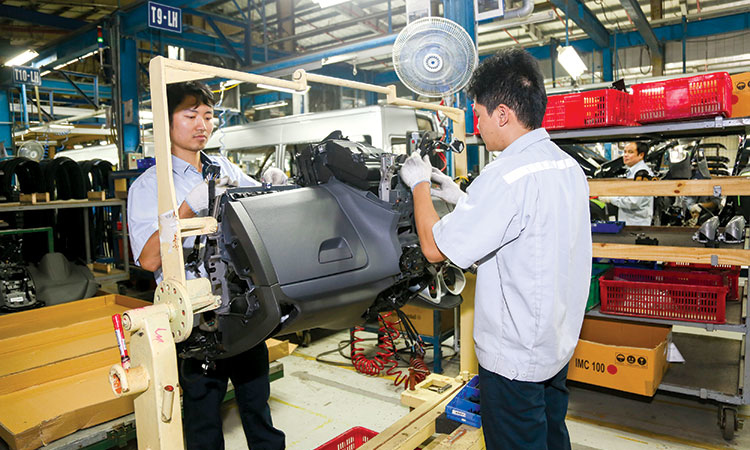|
Vietnam
still struggling to develop supporting industries
Vietnam
has been trying to develop support industries for 30 years, but is still
finding it difficult to squeeze into the global supply chain.

Vietnam vows to develop
supporting industries
The government has decided that products of supporting
industries will have to satisfy 45 percent of essential needs for domestic
production and consumption by 2020, and by 70 percent by 2030.
However, analysts are pessimistic about the development
of Vietnam’s supporting industries and the feasibility of the plan.
Amid foreign direct investment (FDI) in the last 30
years, Vietnam has missed opportunities to develop supporting
industries.
The domestic supporting industry remains underdeveloped
and few enterprises have joined the industrial production supply chain.
According to the Institute for Industry & Trade
Policy Research (ITPR), Vietnam had 1,383 enterprises in supporting
industries, mostly operating in three fields – mechanical engineering,
electronics and plastics – rubber. The figure accounts for only 0.3 percent
of the total number of 500,000 enterprises.
The enterprises can only make simple products and
components, such as packages and plastic prototypes, while complex components
such as electronic accessories needed for assembling are from
foreign-invested enterprises or imports.
Kitagawa Hironobu from JETRO (Japan External
Trade Organization) said at the 2017 supporting industry forum that 570
Japanese-invested projects were implemented in Vietnam in 2016, but the
localization ratio was only 34 percent.
Many Japanese enterprises had to import input materials
and components from Thailand and China.
Nguyen Thi Xuan Thuy from ITPR said that the market
capacity in Vietnam is very large. Automobile production and electrical and
electronic engineering are fields which need supporting industry products in
large quantities.
These are the two most developed industries. The
domestic automobile market sells 300,000 cars each year and has a growth rate
of 24 percent.
After 20 years of development, Vietnam has 20 auto
assembling enterprises, but has only 84 first-tier vendors and 145 second-
and third-tier vendors, small figures compared with demand and with other
regional countries.
Thailand has 16 automobile enterprises, but has a large
network of satellite enterprises with 700 first-tier and 1,700 second- and
third-tier vendors.
As for the electrical and electronic engineering
industry, there are 1,000 enterprises providing components, but Vietnamese
enterprises do mostly assembling and trading only.
According to Truong Chi Binh from VASI (Vietnam
Association for Supporting Industries), 90 percent of components needed in
rubber and plastics manufacturing must be imported, while the proportion is
94 percent in electrical and electronic engineering.
M. Ha,
VNN
|
Thứ Tư, 18 tháng 4, 2018
Đăng ký:
Đăng Nhận xét (Atom)
Không có nhận xét nào:
Đăng nhận xét